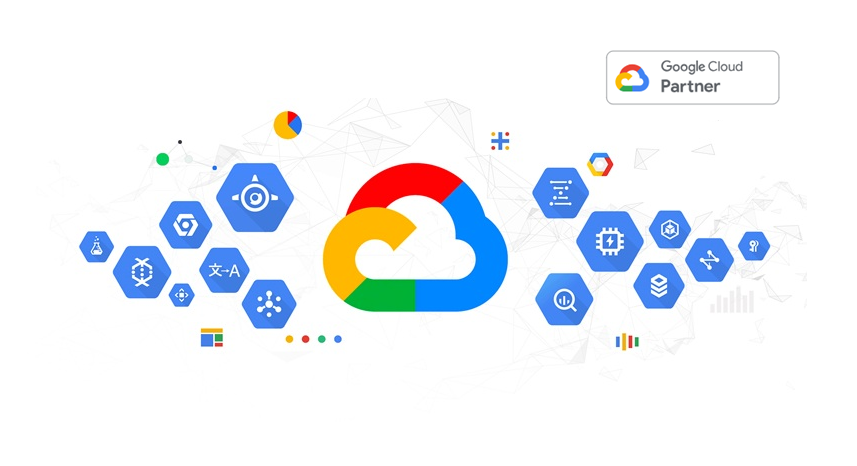Module 1: Best Practices for Application Development
Topics:
Code and environment management
Design and development of secure, scalable, reliable, loosely coupled application components and microservices
Continuous integration and delivery
Re-architecting applications for the cloud
Objectives:
Design and develop secure, scalable, reliable, loosely coupled application components and microservices.
Understand how to rearchitect applications for the cloud.
Activities:
Module quiz
Module 2 - Getting Started with Google Cloud Development
Topics:
Overview of Google Cloud services for apps and scripts:
Google Cloud APIs
Cloud SDK
Cloud Client Libraries
Cloud Shell
Cloud Code
Demo: Google APIs Explorer
Lab: Setting up a Development Environment
Objectives:
Identify different Google Cloud services for hosting applications and scripts.
Activities:
1 demo, 1 lab,1 quiz
Module 3 - Overview of Data Storage Options
Topics:
Overview of options to store application data
Use cases for Cloud Storage, Firestore, Cloud Bigtable, Cloud SQL, and Cloud Spanner
Demo: Connecting Securely to a Cloud SQL Database
Objectives:
Choose the appropriate data storage option for application data.
Activities:
1 demo, 1 quiz
Module 4 - Best Practices for Using Datastore
Topics:
Best practices related to using Firestore in Datastore mode for:
Queries
Built-in and composite indexes
Inserting and deleting data (batch operations)
Transactions
Error handling
Demo: Explore Datastore
Demo: Use Dataflow to Bulk-load Data into Datastore
Lab: Storing Application Data in Datastore
Objectives:
Bulk-load data into Firestore by using Dataflow
Understand best practices related to queries, built in and composite indexes, inserting and deleting data (batch data operations), and transactions error handling.
Activities:
2 demos, 1 lab, 1 quiz
Module 5 - Performing Operations on Buckets and Objects
Topics:
Cloud Storage concepts
Consistency model
Demo: Explore Cloud Storage
Request endpoints
Composite objects and parallel uploads
Truncated exponential backoff
Demo: Enable CORS Configuration in Cloud Storage
Objectives:
Understand Cloud Storage concepts.
Differentiate between strongly consistent and eventually consistent operations.
Access Cloud Storage through request endpoints.
Use object composition to upload an object in parallel.
Use truncated exponential backoff to deal with network failures.
Activities:
2 demos, 1 quiz
Module 6 - Best Practices for Using Cloud Storage
Topics:
Naming buckets for static websites and other uses
Naming objects (from an access distribution perspective)
Performance considerations
Lab: Storing Image and Video Files in Cloud Storage
Objectives:
Understand how to name buckets for static websites and other uses, how to name objects (from an access distribution perspective, and performance considerations.
Activities:
1 lab and 1 quiz
Module 7 - Handling Authentication and Authorization
Topics:
Identity and Access Management (IAM) roles and service accounts
User authentication by using Firebase Authentication
User authentication and authorization by using Identity-Aware Proxy
Lab: Adding User Authentication to your Application
Objectives:
Implement federated identity management
Activities:
1 lab and 1 quiz
Module 8 - Using Pub/Sub to Integrate Components of Your Application
Topics:
Topics, publishers, and subscribers
Pull and push subscriptions
Use cases for Pub/Sub
Lab: Developing a Backend Service
Objectives:
Understand Pub/Sub topics, publishers, and subscribers.
Understand pull and push subscriptions.
Explore use cases for Pub/Sub.
Activities:
1 lab, 1 quiz
Module 9 - Adding Intelligence to Your Application
Topics:
Overview of pre-trained machine learning APIs such as the Vision API and the Cloud Natural Language Processing API.
Objectives:
Explore pre-trained machine learning APIs such as Cloud Vision API and Cloud Natural Language API.
Activities:
1 quiz
Module 10 - Using Cloud Functions for Event-Driven Processing
Topics:
Key concepts such as triggers, background functions, HTTP functions
Use cases
Developing and deploying functions
Logging, error reporting, and monitoring
Demo: Invoke Cloud Functions Through Direct Request-response
Lab: Processing Pub/Sub Data using Cloud Functions
Objectives:
Use Cloud Functions for event-driven processing.
Activities:
1 demo, 1 lab, 1 quiz
Module 11 - Managing APIs with Cloud Endpoints
Topics:
Open API deployment configuration
Lab: Deploying an API for the Quiz Application
Objectives:
Understand OpenAPI deployment configuration.
Activities:
1 lab, 1 quiz
Module 12 - Deploying Applications
Topics:
Creating and storing container images
Repeatable deployments with deployment configuration and templates
Demo: Exploring Cloud Build and Cloud Container Registry
Lab: Deploying the Application into Kubernetes Engine
Objectives:
Understand how to create and store container images.
Create repeatable deployments with deployment configuration and templates.
Activities:
1 demo, 1 lab, 1 quiz
Module 13 - Compute Options for Your Application
Topics:
Considerations for choosing a compute option for your application or service:
Compute Engine
Google Kubernetes Engine (GKE)
Cloud Run
Cloud Functions
Platform comparisons.
Comparing App Engine and Cloud Run
Objectives:
Explore considerations for choosing a compute option for your application or service.
Activities:
1 quiz
Module 14 - Debugging, monitoring, and Tuning Performance
Topics:
Google Cloud’s operations suite
Managing performance
Lab: Debugging Application Errors
Logging
Monitoring and tuning performance
Identifying and troubleshooting performance issues
Lab: Harnessing Cloud Trace and Cloud Monitoring
Objectives:
Debug an application error by using Cloud Debugger and Error Reporting.
Use Cloud Monitoring and Cloud Trace to trace a request across services, observe, and optimize performance.
Activities:
1 demo, 2 labs, 1 quiz


